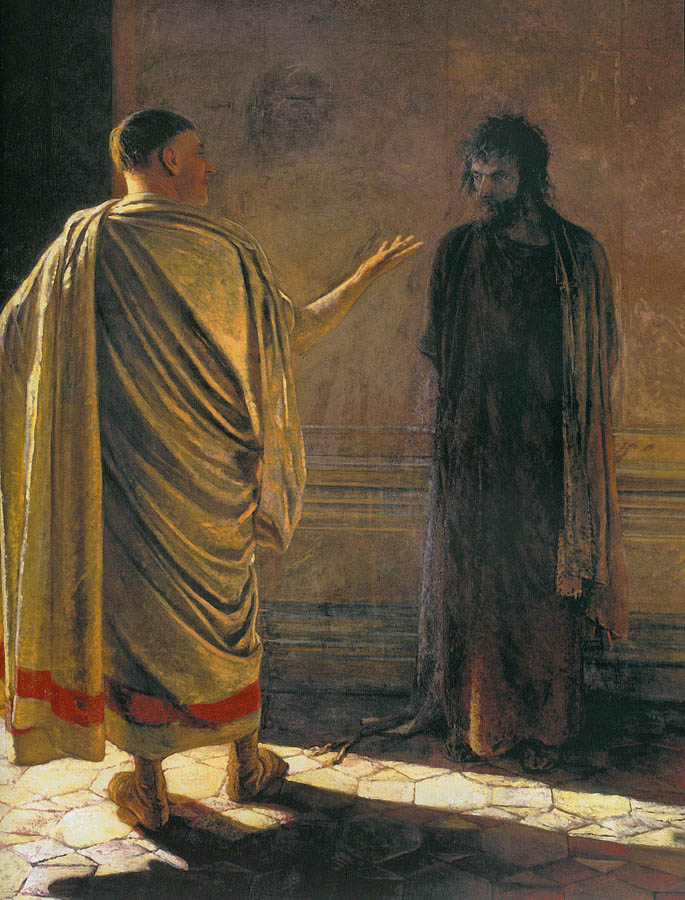In Part V, Chapter 22 of Anna Karenina, Alesky Aleksandrovich Karenin is alone and in despair. His wife Anna has left him for Count Vronsky, a military officer. He feels he can not endure the "weight of universal contempt and exasperation" which he sees in the faces of all he meets. At his most bitter moment, his friend the Countess Lydia Ivanovna comes to him. The warmth of her affection causes Karenin to break down.
"Dear friend!" she said in a voice breaking with emotion. "You must not give way to grief. Your sorrow is great, but you must find consolation."
"I am crushed, I am annihilated, I am no longer a man!" said Aleksey Aleksandrovich, . . . gazing into her brimming eyes. "My position is so awful because I can nowhere find support, not even in myself."
"You will find support; seek it -- not in me, though I beseech you to believe in my friendship," she said, with a sigh. "Our support is love, that He has vouchsafed us. His burden is light," she said, with the look of ecstasy Aleksey Aleksandrovich knew so well.
"He will be you support and your succor."
Though it seemed evident that she was moved by her own lofty sentiments, and by that new mystical fervor which had lately gained ground in Petersburg, and which seemed to Alekesey Aleksandrovich excessive, still it was gratifying to hear this now.
******************************************************************************
Our support is love, that He has vouchsafed us.
35 Who shall separate us from the love of Christ? shall tribulation, or distress, or persecution, or famine, or nakedness, or peril, or sword?
36 As it is written, For thy sake we are killed all the day long; we are accounted as sheep for the slaughter.
37 Nay, in all these things we are more than conquerors through him that loved us.
38 For I am persuaded, that neither death, nor life, nor angels, nor principalities, nor powers, nor things present, nor things to come,
39 Nor height, nor depth, nor any other creature, shall be able to separate us from the love of God, which is in Christ Jesus our Lord.
Romans 8:35-39
His burden is light
28 Come unto me, all ye that labour and are heavy laden, and I will give you rest.
29 Take my yoke upon you, and learn of me; for I am meek and lowly in heart: and ye shall find rest unto your souls.
30 For my yoke is easy, and my burden is light.
Matthew 11:28-30
*All Scripture quotes are from the King James Version unless otherwise stated.
(Source: BibleGateway. Image Source: WikiPaintings)




